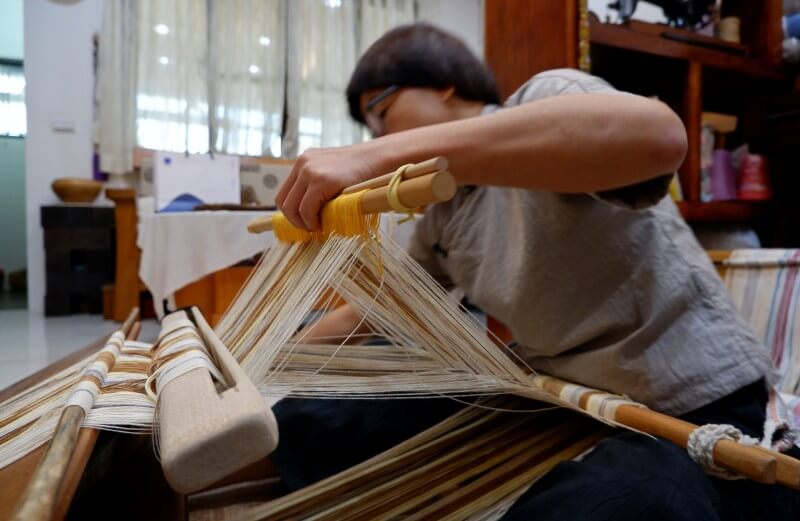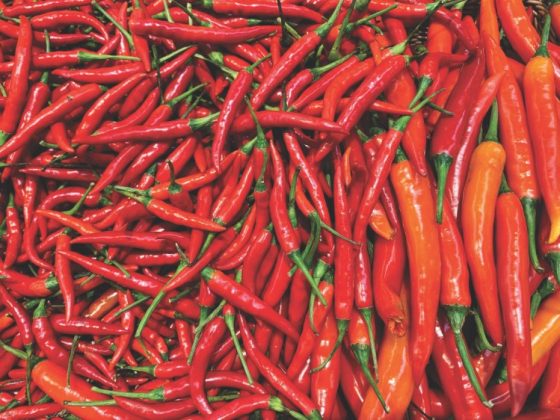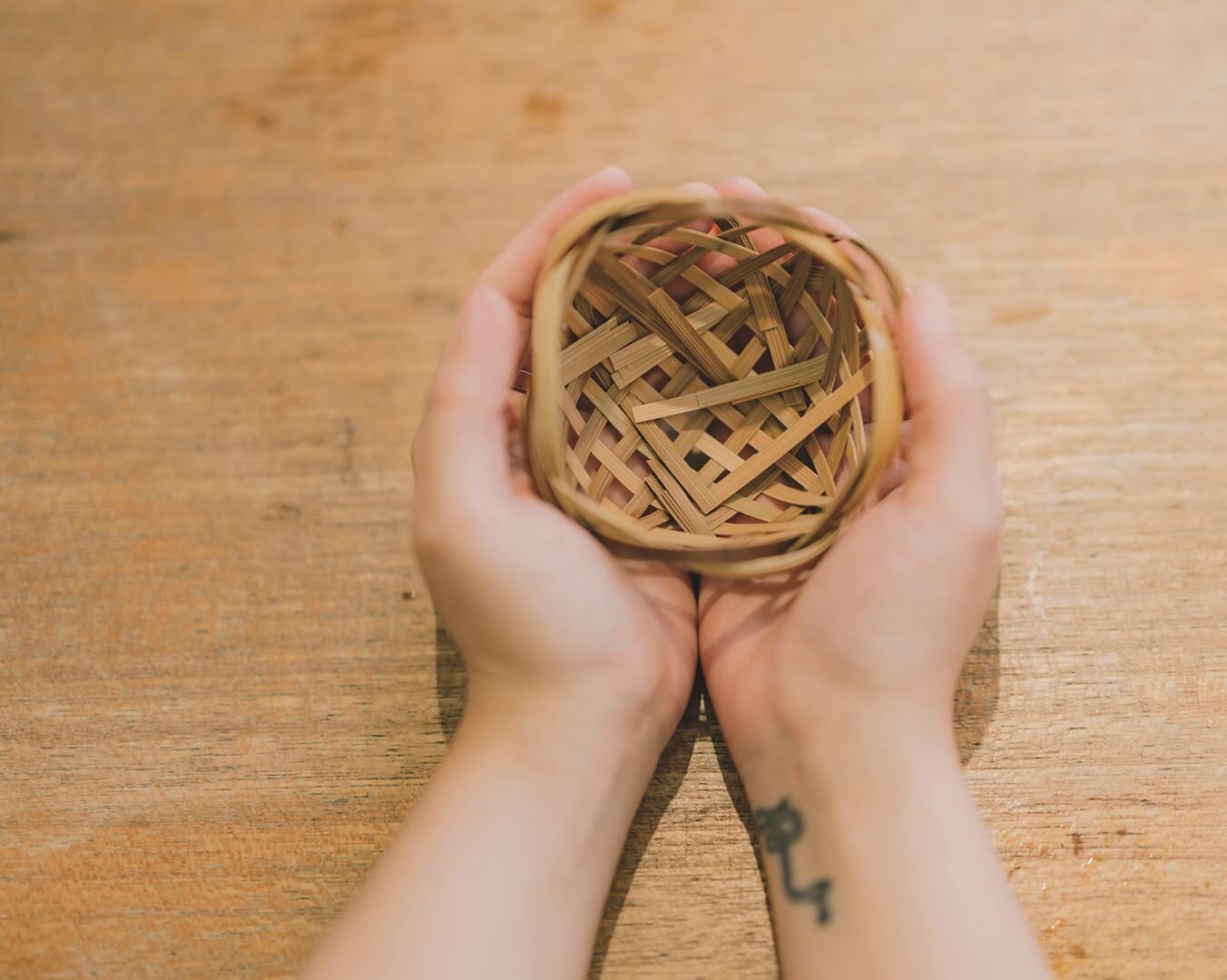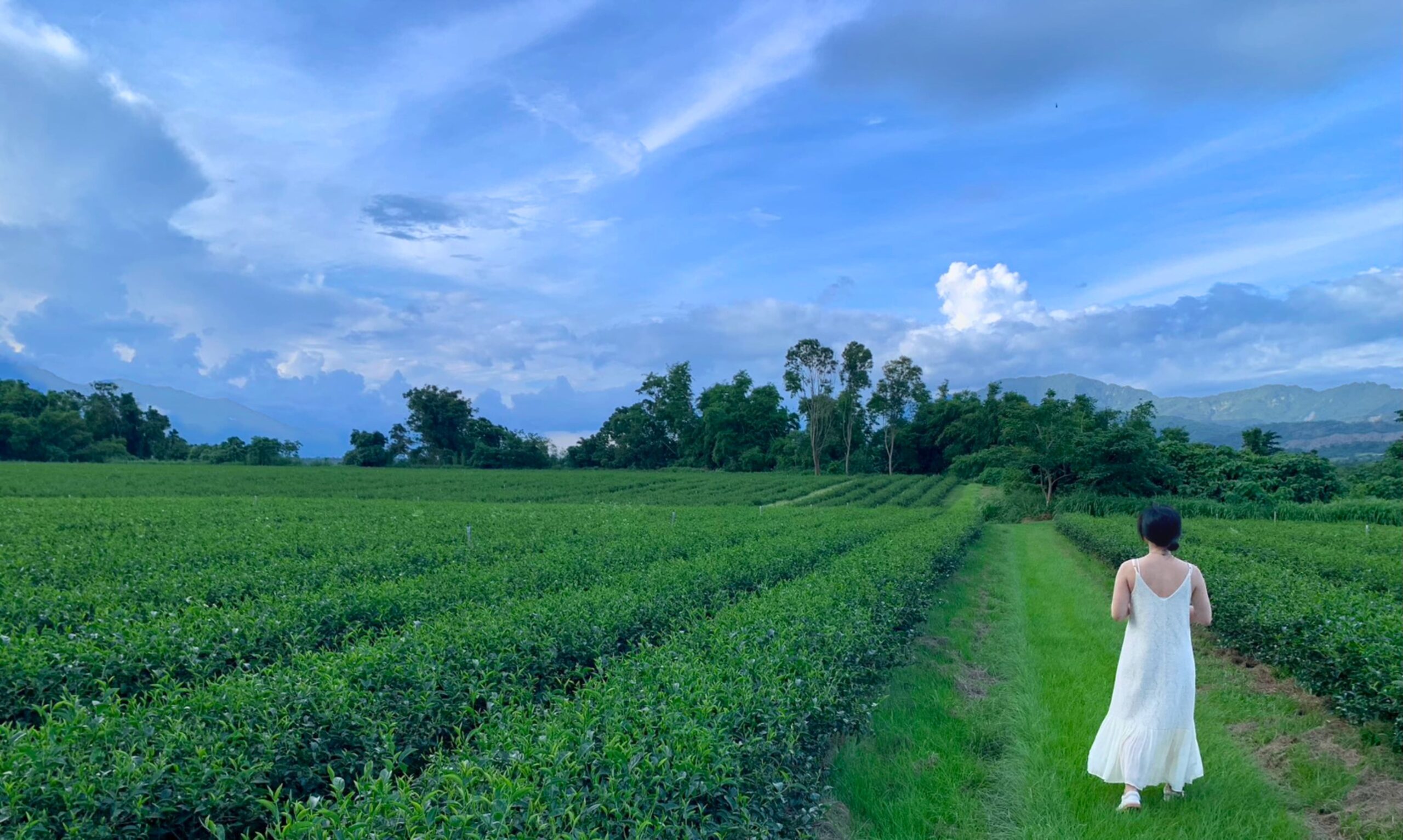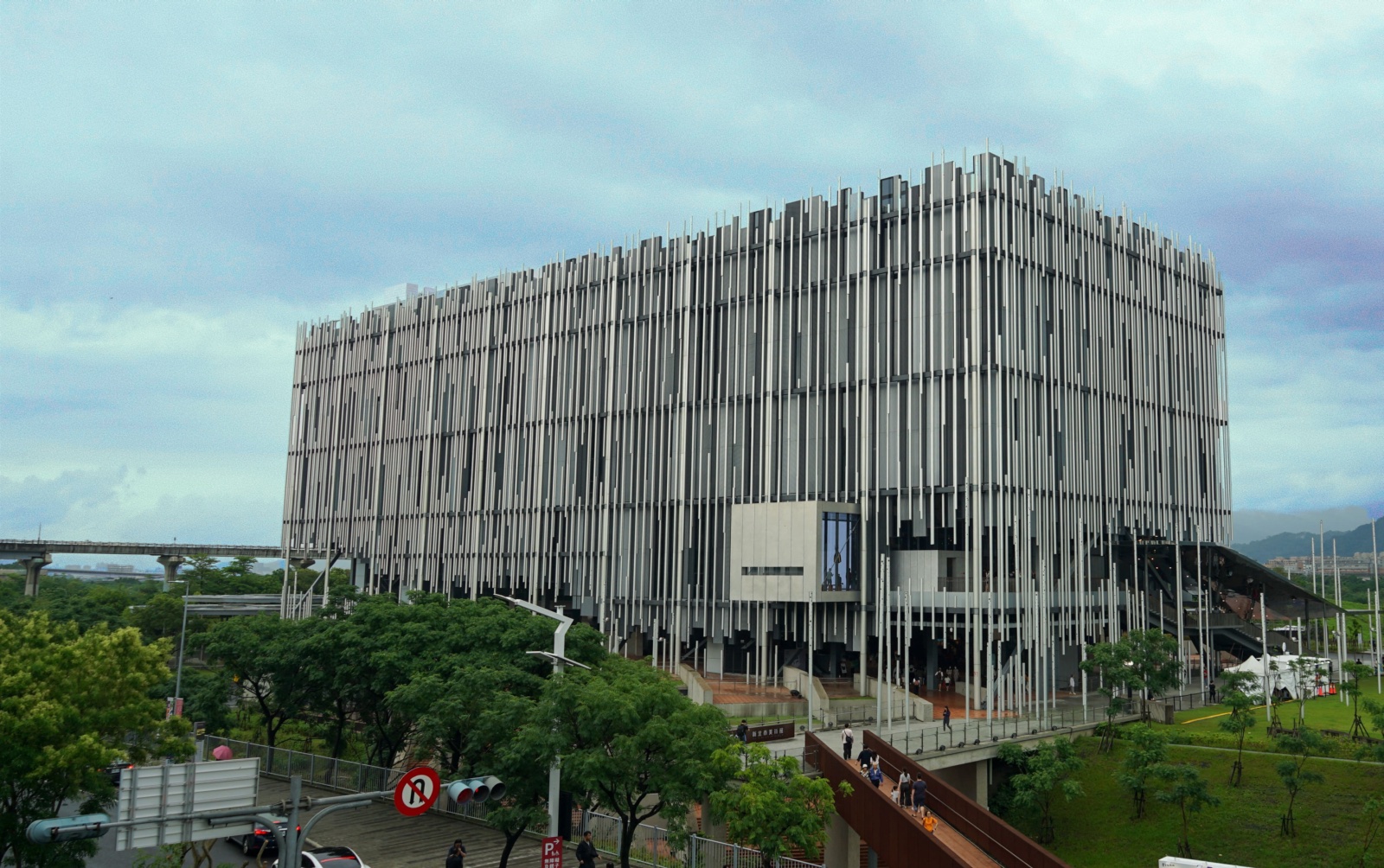Among the 16 officially recognized indigenous peoples in Taiwan, the Atayal and Kavalan people, who were skilled at weaving, have long been known for their culturally distinct patterned clothing. Within their various tribes, women must learn to weave from their female elders in the family before they are permitted to take a husband. Women who are good at weaving also acquire social status within the tribe and earn the respect of the tribespeople. In addition, Atayal people believe that only women who weave may cross the Rainbow Bridge that leads them to their ancestors in the afterlife.
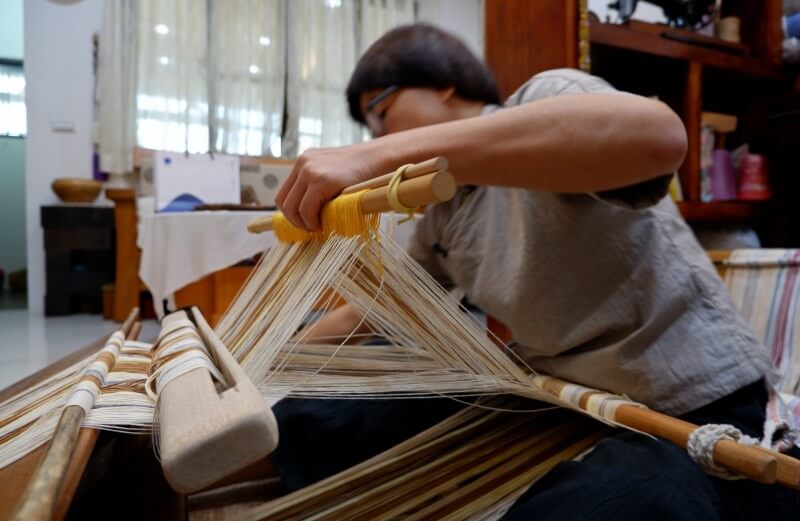
However, during the period of Japanese occupation, indigenous people were forbidden from practicing their traditional customs under the colonial assimilation policy. Many Atayal and Kavalan women were forced to give up weaving, causing the weaving culture to gradually vanish from their lives. Fortunately, in recent years, a small part of the craft of weaving that was passed down between generations of women within the tribe began to surface again through the indigenous cultural rejuvenation movement. Fascinated with weaving, Lin Mei-yu (林美玉) founded “Ferry of the Weaving Heart (織心擺渡)” after learning the weaving craft of the Atayal and Kavalan people, committing herself fully to the practice and advocacy of weaving. Taiwan Scene has invited Mei-yu to share her insights on weaving with us today.
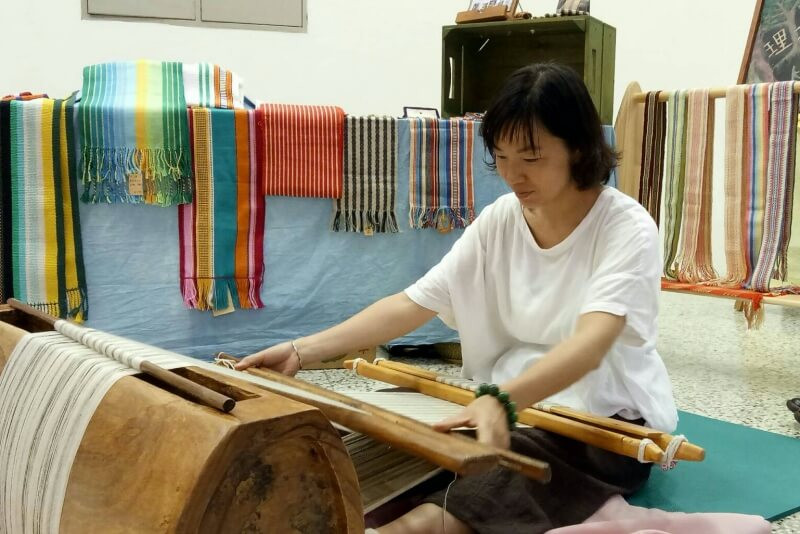
Passing on the Traditional Weaving of Indigenous People
Neither a member of an indigenous tribe nor a textile practitioner, Mei-yu was previously a special needs teaching assistant at a village primary school in Yilan County. Looking at the traditional patterns of the indigenous people and the fabrics slowly taking shape on weaving looms around the school, the woven patterns gradually took root firmly in her mind as well.
She impulsively sought out weaving classes, and her wish was granted when she visited Hualien to take up classes on banana silk weaving from the Kavalan people, where she learned to scrape hemp to make yarn. She describes the moment she began in earnest, saying, “I felt moved like never before, like I had awakened.” Since then, Mei-yu has embarked on the road of weaving, selecting natural or organically grown materials for her work and gradually developing woven works of her own unique styles.
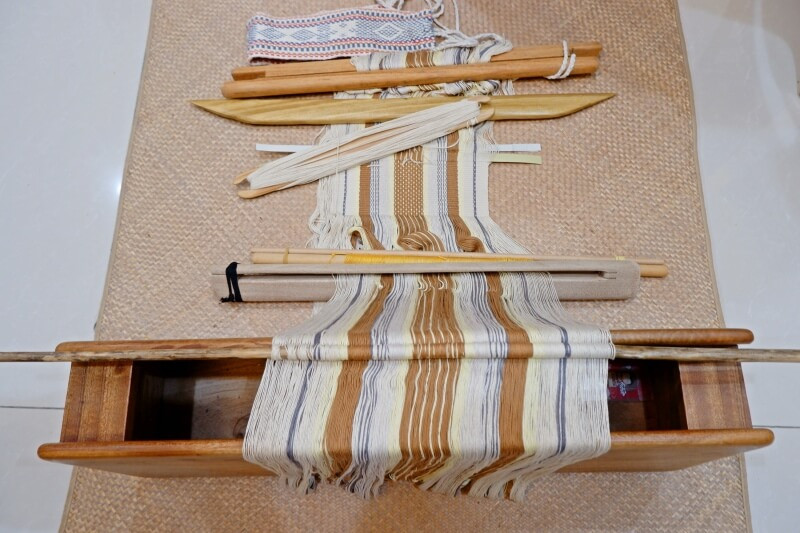
Deeply moved by the craft of weaving, Mei-yu further sought to learn from Atayal weaving teachers in Wulai District and Nan’ao Township. Generally speaking, the traditional Atayal weaving craft was only taught to women within the tribe, but the Atayal teachers were so moved by Mei-yu’s passion that they not only taught her the craft, but also gave her the Atayal name of “Lawa.” “Every Lawa’s craftsmanship in our tribe is really good,” said the tribeswomen, The name was both a gift and the affirmation of a lifetime.
The Charms of Atayal Weaving
Differing from most hand weaving techniques, the Atayal horizontal strapped waist loom requires coordinated interaction between the weaver and loom. The weaver must be seated and exert the strength of her whole body. Her legs must be straightened to support the tension box, and she must alternate between stretching out the yarn to create tension and releasing the yarn to lift the weave. Only after familiarizing the body with the rhythm of tension and release and repeating this hundreds and even thousands of times can the ring-shaped fabric be formed. As such, the process becomes a metaphor for the cycle of human, earth, and material.
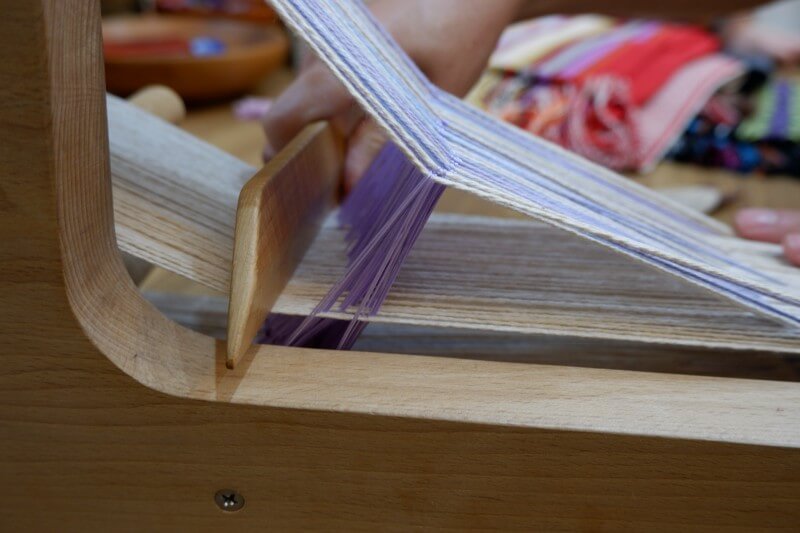
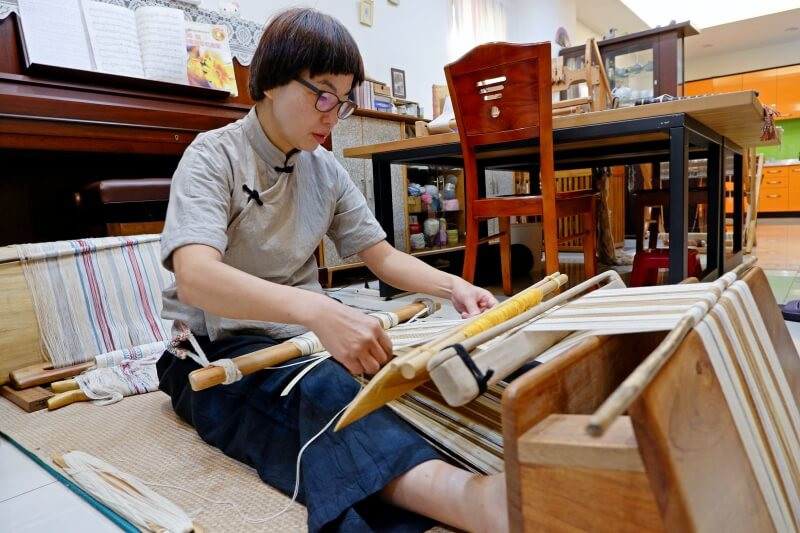
Mei-yu says that, aside from the back-and-forth of the weaving process, the key to success or failure lies in “warping.” The preliminary warping process for large-scale works can take up to one or two hours. “If you leave mid-way and the force becomes too lax or too tense, the entire piece may be ruined.” She engrossed herself totally in her craft, seeking to complete an entire piece in one sitting. Every step was a test of her skill.
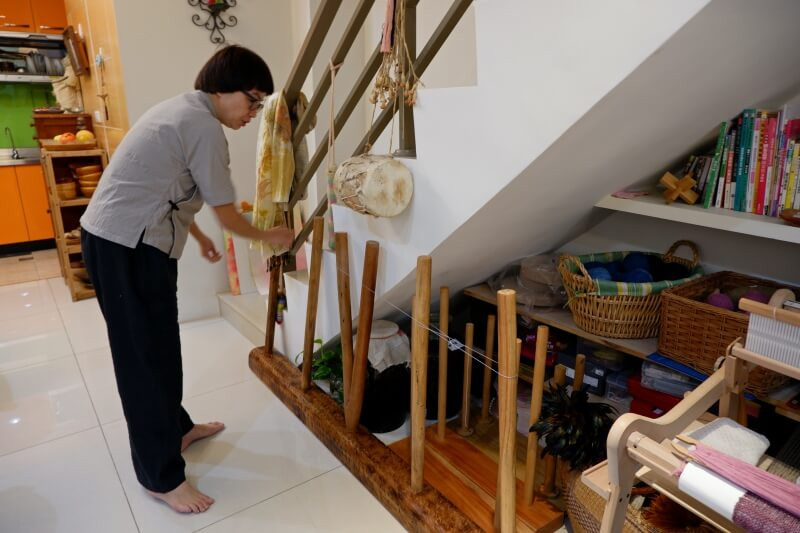
Woven cloths are not only for the purpose of display. To Mei-yu, woven works further extended from art to daily life. Using the techniques of twill weaving and pick weaving, she transforms traditional Atayal color schemes and diamond patterns symbolizing the eye of ancestral spirits into rainbow-colored woven cloths, pocket tissue holders, kiss-lock purses, and other woven products that are both beautiful to look at and practical for everyday use. She further learned to build her own traditional looms, slowly carving and chiseling wood into hollow and lightweight tension boxes, the indispensable lease rods and beater blades for separating yarn and other parts. She immersed herself in every process, passing on the weaving craft and spirit of the Atayal people.
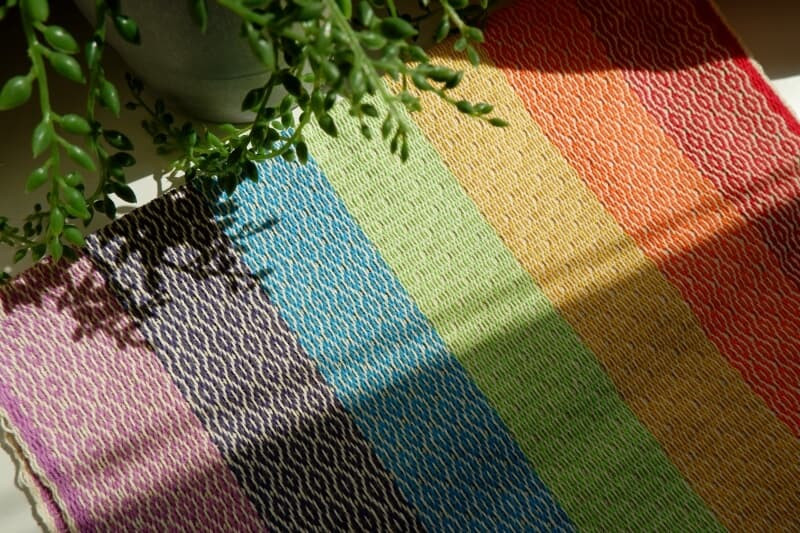

Modern Weaving, Connecting Chance Encounters in Life
Weaving represents the continuation of historical memory for indigenous people. As a Han Chinese, Mei-yu views the craft with respect and tolerance. She does not deliberately work on a certain pattern or color scheme, but spends more of her time interpreting her current ideas and digesting her inner thoughts through weaving to achieve inner peace.
She thought about the children she met when she worked as a special needs teaching assistant in the past, who were restricted in access to therapeutic relief and choice of vocation. Later, Mei-yu discovered “Saori style weaving” originating from Japan, which saw weaving as a medium for special needs education. The advocate for Saori style weaving, Misao Jo (城美紗緒), is over 100 years old, weaves daily, and makes improvements to weaving looms to enable people with different physical and mental handicaps to experience the joys of weaving. This inspired Mei-yu to pursue her dreams for the future of weaving. She looked forward to transform what she learned into simple woven cloths so that people with physical and mental handicaps may have more choices.
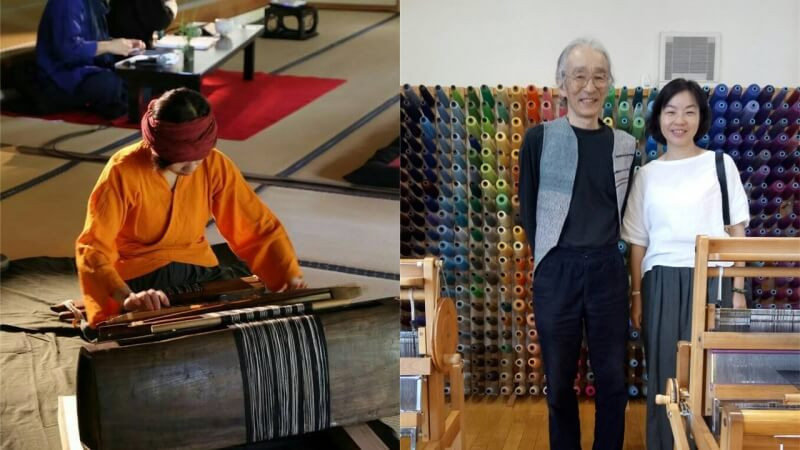
In 2019, Mei-yu visited Japan to take part in weaving craft exchanges. She specially adjusted her itinerary to visit the Saori weaving classroom and brought home several looms and parts that enable people with special needs to engage in weaving. Mei-yu hopes to undergo training in Japan once her own techniques acquire a certain maturity so that she may strive towards her goal of becoming a special needs weaving teacher.
“Everyone around me are people who helped me reach the shore,” says Mei-yu. She met many people along the road of weaving and received a lot of help, which has crystallized into beautiful and precious memories. Currently owning seven kinds of weaving looms and familiar with different weaving techniques, she is deeply grateful and filled with respect for her encounters in life. She continues to strive towards connecting with herself and the people she meets along the way through the craft of weaving and teaching, with the hope of ferrying more people across in seeking out the sparks of life.
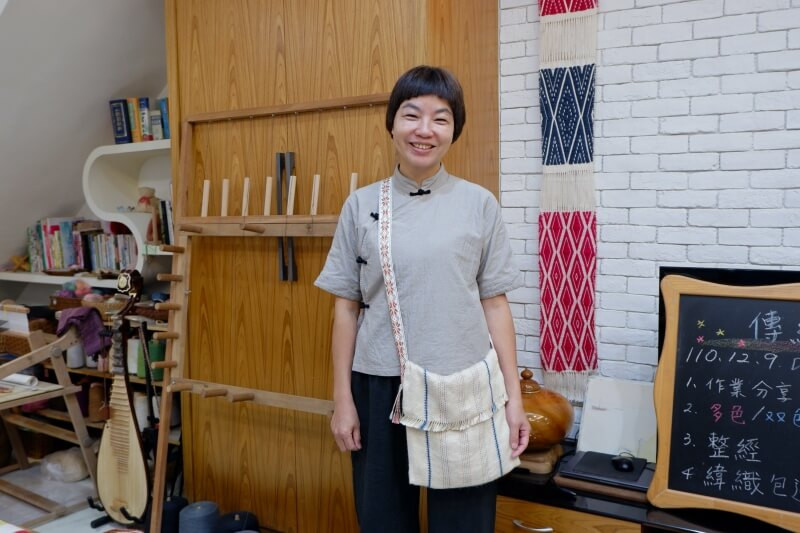
Words by Fuafu
Photos by Fuafu, Mei-yu

